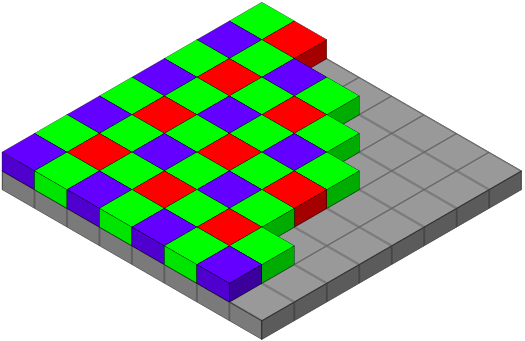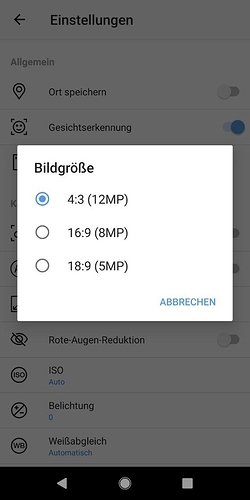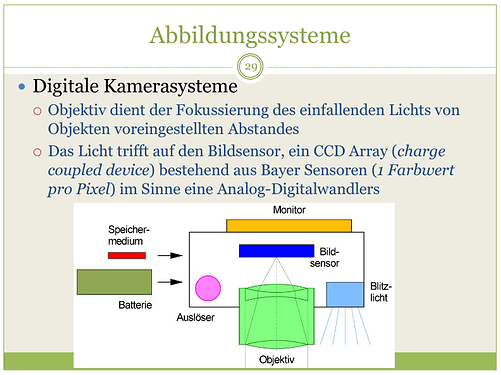The negative comments speak for itself.
Thank you, rae, for speaking up. But again this is SO typical Fairphone. And I am a customer since FP1.
You sell something before ensuring that it is really working, or reliable or whatever.
I understand that you can do that as people are intrinsically motivated to buy a fair phone, but it is so disappointing and embarassing!
I 100% agree @anon18561511. Quality control is not what it should be.
I can accept paying a premium for Fairphone’s principles, instead of a cheaper, less ethical device with comparable/better specs.
However, it’s frustrating when issues come up that are seemingly due to lack of care.
Hi @maciekpruski,
Welcome to this forum!
You will discover here a lot of interesting opinions… if you have time to read a lot of posts  !
!
I don’t know if A Bette Camera will support Super sensor mode. Good question. Do photos resulting from super sensor 48MP have differences that entail specific processing modes ?
FP3 or PF3+
If you don’t have a real camera and High quality picture is not your main goal, I would buy a FP3 only (-50€). Then, if really needed in one or two years, buy the 48MP+++ with newly adapted firmware, software and processing (+?55€ +?32€ front).
Anyway, it’s a good idea to buy a FP3xy and also consider using another OS than G00gle, for instance /e/.
Good luck!
It has been mentioned before and i have to repeat it: This “48 Megapixel” camera is unable to take 48 Megapixel photos - it’s a disappointing if you think about it
They advertise it as 48 Megapixel Camera and only in the small details they say
48 megapixels resolution with 12 megapixel output
It’s kind of funny, i bought 2 new cameras and the selfie cam has a higher resolution (16MP) than the backside camera (12MP)
It has also been mentioned that …
… which sounds like overkill.
The resolution in itself is nothing to be disappointed about. The question is … does the 4-sensor-pixels-into-1-output-pixel process do any good for the photos the camera makes? Is it an improvement compared to the old camera?
There seems to be some room for disappointment on that front judging by the posts in this forum, until Fairphone perhaps manage to decisively improve the camera App.
Thanks @domino7 !
Generally within “a better camera” app, the super sensor mode is one with more advanced processing, something like the gcam. It is in the menu for various extra modes and options, along with things like panorama, HDR etc. My current smartphone is not supported though, I’m curious if the FP3 or FP3+ would be compatible.
If anyone has the app installed and could check it for me I’d be very grateful
Re: 48 MP
As an avid photographer, I’m going to say that mostly it wouldn’t make sense so there is no need to be disappointed. There was an interview lately with Mark Levoy, the lead engineer behind google pixel’s camera app where he was talking about this - the gains from increased resolution in these sensors are balanced by higher noise and lower dynamic range of the small pixels. There is zero benefit in such small sensors by going for a higher resolution.
What does make sense is the technique used here called pixel binning. It combines four pixels into 1 big pixel that has more information, and with clever processing a better image can be created (more dynamic range and less noise). But the real difference between this kind of sensor and a 12-egapixel sensor of the same size is not going to be spectacular anyway.
In today’s flagship smartphones the final image quality is 90% processing and 10% gear (sensor, lens etc). This is why apps like the GCAM and its ports are so great.
BTW, the same guy- Mark Levoy is currently working with Adobe on a universal app for all smartphones that would utilize the newest computational techniques. It will be compatibe with android devices and legal to download through the google play store so that’s something to look forward to.
Hi 
First of all, I didn’t catch up on all the 100 posts above mine, I just read the first 30, so sorry if my question was already answered.
What I’m interested in is how the sensor on the old camera module was built.
Every digital camera has a bayer filter in it that composes each pixel of four different subpixels, two green ones and one red and blue respectively. https://upload.wikimedia.org/wikipedia/commons/thumb/3/37/Bayer_pattern_on_sensor.svg/1200px-Bayer_pattern_on_sensor.svg.png
Since the old camera also had 12MP, its built-in bayer filter must have had 48 “Mega-Subpixels” as well.
So apart from the 13% sensor size enlargement (which is one of the most important factors of image quality. Just a reminder: FullHD has a resution of 2MP and 4K has 8MP, so everything above that is completely unnecessary on a phone anyways), the number of subpixels on the bayer filter apparently hasn’t changed at all.
The only thing that has changed is that FP now shouts out the number of subpixels in a confusing way so that people think that they’re actually getting 48MP photos (which again, the resolution would be rediculously unnecessary for a phone camera, but explain that to your average “bigger is better” customer).
I thought the camera modules were a disappointment and just marketing from the minute I saw the introduction video (back then I didn’t even know that the 48MP weren’t real. It’s just that nobody who uses a phone camera would ever need a 48MP photo).
This is just one of a couple of examples I’ve noticed in the past year or two of FP being less responsible and transparent and more stupidly marketing oriented. I’m sad to see that.
Is this an affirmation? Could you give a source? I’m curious, I didn’t know every digital camera used the quad bayer technology.
It was mentioned in an image processing class at my university. The slide is not very helpful, but I remember the professor explaining it in more detail, also mentioning why 50% of the filter is green and only 25% red and blue respectively (our human eyes are evolutionally trained to distinguish green tones better, so more sensor space is used to get a more accurate colour).
Wikipedia also says that “its particular arrangement of color filters is used in most single-chip digital image sensors used in digital cameras, camcorders, and scanners to create a color image.”

What I’m trying to say is that apart from the bigger sensor the camera is probably very much the same. And as @maciekpruski already mentioned,
So unless FP improves the camera app the pictures will probably not be that amazing. I’m just disappointed that they went with the intransparent “fake specs” instead of just saying “the new camera also has 12MP, but it has a bigger sensor so the image quality should be a little better”.
My understanding of bayer vs. quad bayer, is that per part of the filter (the colourful squares on top of the grey squares [light sensors]), there are one (bayer) or four (quad bayer) individual sensors. If you’re averaging (or something similar) four readings in quad bayer to a single value, there will be less noise. There is more noise in low light, so the improvements should be at that end.
In the case of the single bayer data and the combined quad bayer data (if values are combined before interpolation) you still have to interpolate the readings to get a full frame for each colour. On a 12 MP sensor you’ll have 6 MP of actual green data, and 3 MP of each of red and blue. The other values are estimated. Interpolation of colour values on full data from a quad bayer sensor gives you a lot less accuracy than you’d have on a 48 MP single bayer device. It could be that it doesn’t add much (if anything) compared to downsampling (before or after interpolation) to 12 MP.
Still, it appears that some devices do offer 48 MP output (but the reviews I read mentioned the 12 MP output was as good or better), so it would be interesting for experimentation if the firmware does offer the possibility.
That is true, the upgrade seems very minor. It definitely works from marketing perspective- they had a lot of praise in reviews for offering modular upgrades instead of forcing users to buy new phones.
An upgrade to the camera app would be much better though… The problem is that such upgrade is costly and difficult to make, releasing a new sensor module is much easier.
I’m currently deciding between the FP3 and FP3+ and honestly I think I’ll just get the FP3 and wait to see the app update.
It’s worth to note from time to time that other improvements went into the Fairphone 3+, too. It doesn’t only feature the new camera modules.
The Fairphone 3 might of course be a valid choice nonetheless, as long as it’s still available.
It had to arrive: the rigorous French tech site lesnumeriques.com has released a review of the FP3+ and compared the two camera modules (with a sliding split window). It had to be expected: even to them, the change isn’t worth it. They also mistakenly think the fact the camera+ only taking a 12Mpx image is because of the processor capabilities.
All this results in bad advertising for Fairphone:
“The Fairphone 3+ is a product that leaves you a little confused. Sold for € 469, compared to € 419 for the Fairphone 3, it only brings a slight evolution here. Above all, this evolution is not felt - or very little - in use, and does not seem to justify the choice of the new model, except to hope for a longer software follow-up from the manufacturer. Those who would be tempted to purchase the new photo module separately can also save the expense as its photos are similar to those of the previous version. It is therefore difficult to understand the strategy of the manufacturer, especially as this 3+ does not replace the old version, still on the market.”
Thanks for finding this!
This seems very unlikely, doesn’t it? Why would they support the FP3+ longer given that it is mostly identical to the FP3, specifically with respect to the SoC?
Fairphone Angels have done a very good job in being honest and trying to feel (show) confident with FP3+.
But it is clear to me that FP3+ release was a very bad idea: problems with android 10, camera not worth the difference, lot of confusion, questions about sustainability…
I urge Fairphone Angels to explain Fairphone that they don’t have to be similar to big players. FP are different and have a different market. 12MP camera on a smartphone is more than enough!
In my opinion the FP3+ was a good idea but it was probably too rushed. In fact, the more sustainable materials are definitely a good idea, and the new modules as well, but waiting another year for this might’ve helped, especially to correct all major bugs before release of another Android version, and maybe they could’ve found an even better new camera module until then.
I think whether it was a good idea or not will depend on what they do next. Will they support both models (FP3 and FP3+) for another 4-5 years with updates?
Will they upgrade camera software, and will the update be for both camera modules or only the new ones?

